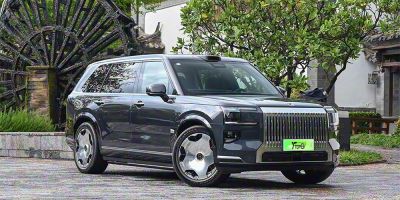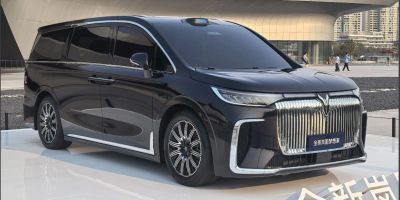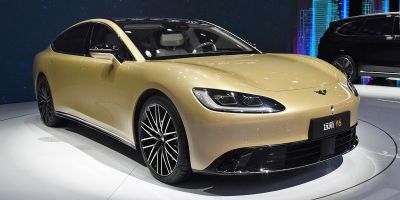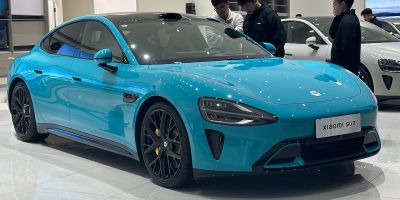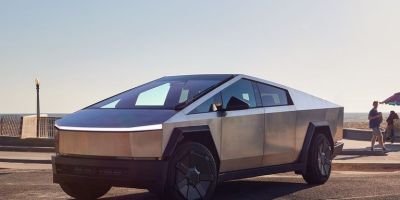⚡ Electric Vehicle operation in different seasons
What is important to know about the Electric Vehicles features in different seasons
As we have already found out, electric vehicles are more profitable in the operation of conventional cars, including due to ease of maintenance. There is no need to regularly change the oil, numerous filters, spark plugs and other attributes of heat-loaded and extremely “moving” elements of an internal combustion engine. A minimum of checks for leaks and extraneous noise - electric power plants are quite simple and reliable. But the ideal engine has not yet been invented. Electric vehicles also have their weaknesses, and they must be taken into account in all modes of operation and at any time of the year.

Where and how can you charge electric vehicles
We have already talked about the design of a modern electric car in general, as well as about the design of modern traction batteries. Let's move on to the operation of the electric vehicle. The first and most important of them confronts the owner immediately after buying an electric car: where and how to charge it? Let's take a look at charging modes, outlets, plug-in standards, and the benefits of switching from gas to electricity.
- Features of operating an electric car in winter
- Features of operating an electric car in summer
- All season recommendations
Features of operating an electric car in winter
The device and the very principle of operation of rechargeable batteries makes them dependent on the ambient temperature. In the south, even in winter, the conditions for electric vehicles remain relatively comfortable. But the further north the "electric train" calls in, the more attention it requires to itself. When driving in winter, you need to take into account the features of operation dictated by the cold.
Reduced battery capacity and charging speed. At sub-zero temperatures, the ability of batteries to accumulate a charge is significantly reduced. The colder it is, the worse the electrochemical reactions inside the battery cells proceed. Because of this, it may not be possible to charge the car to “honest” 100%, although when turned on, the electronics will claim that the battery is full. For the same reason, the time required for charging increases - frozen batteries “accept” the charge worse, and in order to avoid damage to them, the car’s electronics is forced to reduce the current supplied from the outlet. Therefore, you will have to charge the car more often in winter than in summer.
Unpredictable range. Due to the reduced capacity, it is not worth unconditionally believing the numbers on the instrument panel. Sometime after the start of the movement, the electronics will make a “correction” for the external temperature and the state of the battery, correcting the initial readings. But more often than not, the actual power reserve will still be less. In addition to the external temperature, the value of the remaining mileage will be affected by additional energy consumers - a cabin heater or headlights, which have to be turned on earlier in winter.
Reducing the efficiency of energy recovery. The "slowed down" charging process does not only concern filling stations, but also the energy recovery system during deceleration. In winter, it works less efficiently, which also affects the range.
The need to warm up the battery. This option is now equipped with most electric vehicles in the middle price and premium segment. Forced heating maintains the operating temperature of the battery cells, which will ensure their correct operation both when replenishing and when discharging electricity. Warming up “from the outlet” (when the car is charging) allows not only to achieve the optimal battery temperature, but also to heat the interior to a comfortable state before the trip, without consuming the accumulated charge. Therefore, for a long (night) parking in winter, it is better to leave an electric car where there is a socket suitable for it.
Power limitation. If there is no battery heating system or it cannot cope with frost, the electronics can limit the current output by the battery, and hence the power of the electric motor. A dynamic car in the summer in frost will accelerate noticeably more slowly.
Danger of battery freezing. With prolonged downtime in severe frost without periodic autonomous heating or connection to a power outlet, the battery temperature may drop to critical levels. In this case, the flow of electrochemical reactions will be impossible. Electronics will not allow either to start a “frozen” electric car or apply current to the battery. Therefore, the car will have to be transported to heat, where it can “thaw out”.
Low temperature in the cabin. The heat generated by the electric power unit is not enough to fully heat the passenger compartment. This is compensated by a powerful electric heater and the standard heating of the steering wheel and seats that complement it. Together they are quite effective, but consume a lot of energy. Therefore, their use in the cold season is often minimized by owners of electric vehicles in order to save an extra 10-20 percent of the charge.
Features of operating an electric car in summer
In the warm season, there are no problems with battery capacity and power reserve. But it is worth remembering that the thermal mode of operation of batteries has not only a lower, but also an upper limit. At high air temperatures, there is a serious risk of overheating - therefore, powerful electric vehicles have a liquid cooling system for the battery and electric motors.
It is always better to monitor the temperature, but with special attention to this indicator should be taken in the following circumstances:
With fast charging. Any battery generates heat when charged. It is discharged naturally, due to the contact of the battery case with the environment, or through a cooling system, which also “discharges” excess heat into the atmosphere. The heat exchange process proceeds efficiently with a significant temperature difference. If the air around is hot enough, the battery does not cool much. This may cause it to overheat. In this case, the electronics will reduce the current consumed from the outlet, and in critical situations, it will “break” the electrical circuit through which the charging current flows. This will protect the battery from possible ignition, but at the same time, the energy supply will not be fully replenished until its cells cool down. In this case, a full charge may take longer than planned. The most frustrating thing is if, due to some kind of malfunction in the electronics, the safety shutdown does not work.
With active driving. The battery heats up even more in the power output mode. With active acceleration and movement at a constant high speed, the load on it increases. Models with liquid-cooled cells practically do not suffer from overheating, but air-cooled models do not always do a good job of dissipating heat. A modern electric car with working electronics will independently signal a problem, and on older models it is better to monitor the temperature on your own. At the first sign of overheating, the speed will have to be significantly reduced in order to reduce the load on the battery. You should not stop - the oncoming air flow will help to cool the battery faster and more efficiently.
All season recommendations
Regardless of the season, the owner of an electric car needs to remember several nuances of its operation:
Choose the right tires. It is better to give preference to tires that are produced specifically for electric vehicles. They have less rolling resistance, which reduces energy consumption and allows the recovery system to operate at maximum efficiency. If you have to choose among non-specialized tires, you should focus on the fuel efficiency indicator - it is indicated on a sticker that is glued to a new tire. You can read more about choosing tires here.
Check the condition of the battery cover. Most modern electric vehicles have batteries located in the most "dirty" area - under the bottom. In winter, the casing isolates the battery from salt and snow, and in summer it provides tightness when overcoming water obstacles. Before inspection, the bottom is usually washed, and this will only benefit. The absence of deposits and mud "stalactites" contributes to the correct maintenance of temperature operating conditions.
Store your electric car in a comfortable environment. It is best to store and charge it in a closed garage. In summer, this will help to avoid excessive heating, and in winter it will protect the car from hypothermia. A heated parking lot with a stable temperature would be the most suitable, but a “cold” option would also be suitable - in it the temperature difference will be noticeable, but not as sharp as in the open air.
So, very briefly
- At low temperatures, the battery capacity decreases, which negatively affects the range.
- For correct operation, the battery must be additionally heated both during charging and before driving.
- A lot of energy is spent on the operation of heaters - batteries and the interior of an electric car.
- When idle in severe frost, the cells can freeze in a few days. Then the car will be impossible to start. You will have to look for a warm parking lot, transport the electric car there and wait until it “thaws”.
- In summer, you also need to monitor the temperature of the battery. It heats up the most when charging and active driving modes.
- Regardless of the season, it is worth taking care of suitable tires, the integrity of the battery protective cover and a suitable parking place.
